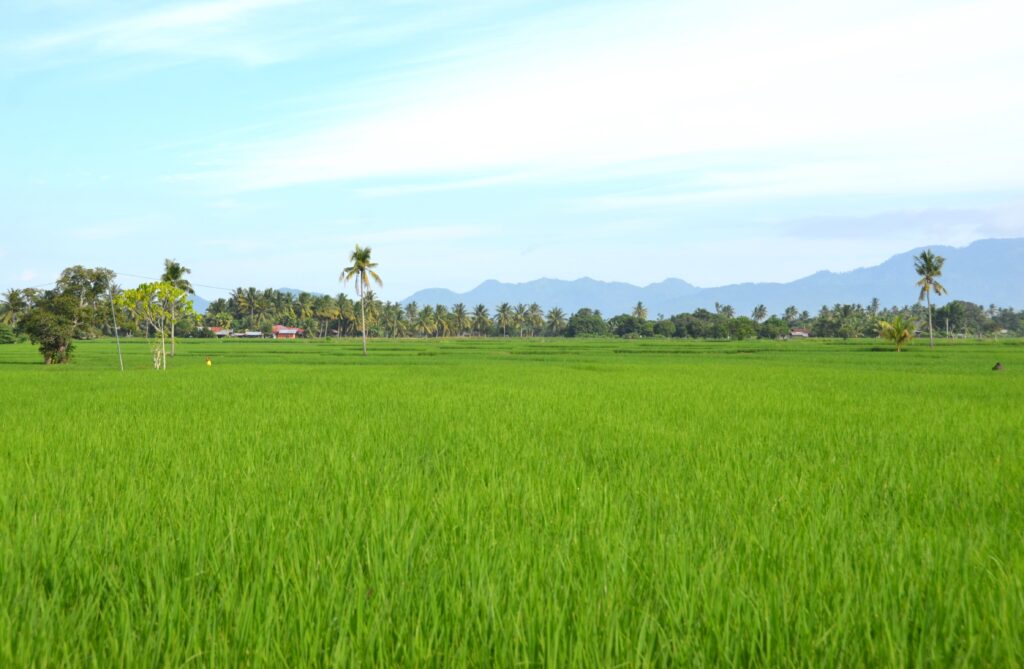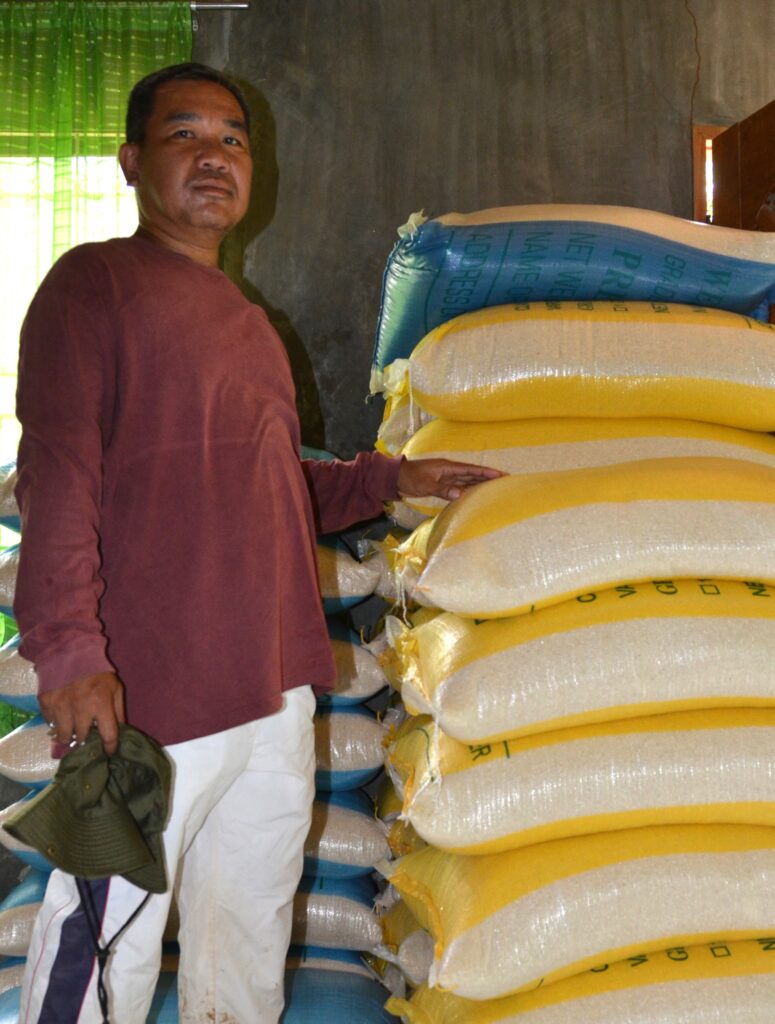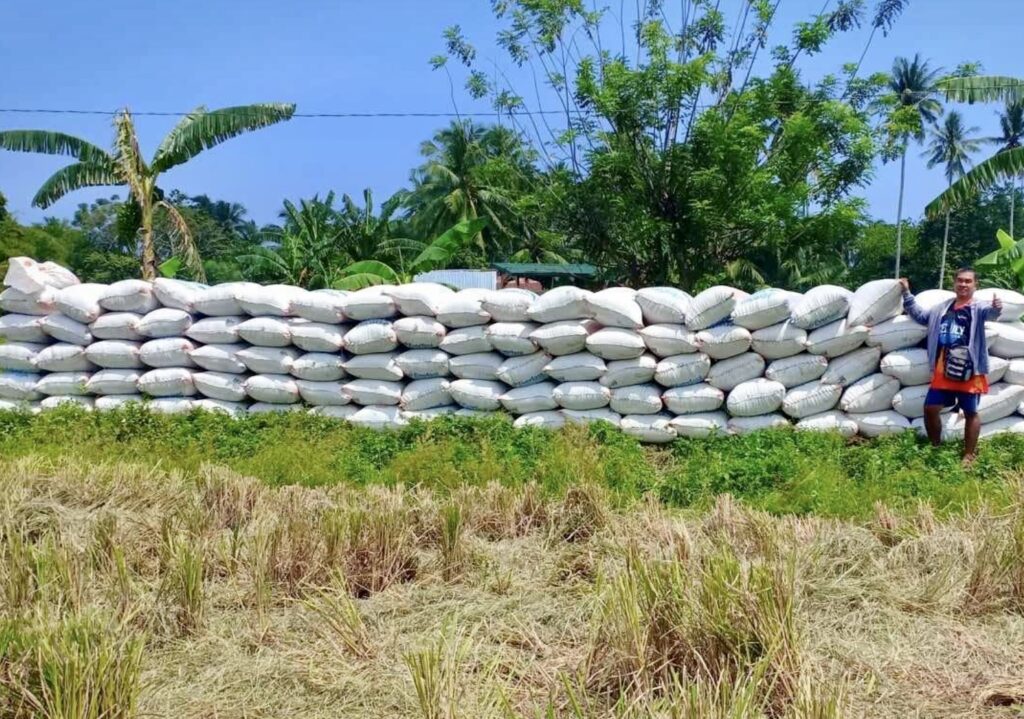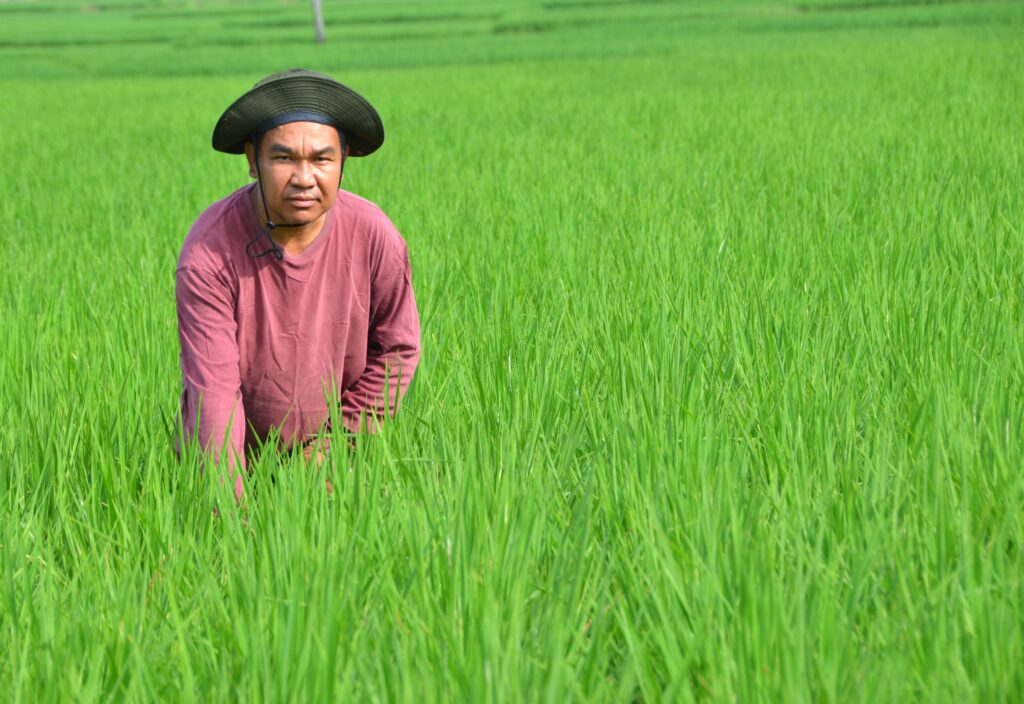By Henrylito D. Tacio
Forty-four-year-old Mhar H. Baclay is no ordinary rice farmer. His farm is located in sitio Sto. Niño of barangay New Clarin, about 7 kilometers away from the town proper of Bansalan, Davao del Sur.
He plants rice in about 6.5 hectares. He also has a two-hectare farm planted to coconut and another two hectares to banana. Actually, he owns only one hectare and the rest are only mortgaged to him.
New Clarin is the rice granary of the municipality. That’s why he grows the crop in his farm, too. “I plant rice because this is the crop being grown in our community,” he said. “Besides, rice is our staple food. Wherever you go, there is always a market for rice.”
Baclay is one of the beneficiaries of the rice hybridization program of the regional office of the Department of Agriculture. As such, he was given free hybrid seeds of rice and fertilizers.
He made a trial of planting Mestiso 204H – or M20 – in his 0.8-hectare rice field. In his farm, he avoided spraying chemicals like insecticides and fungicides because he believes chemicals would also annihilate friendly insects.
Although his farm was infected with bacterial leaf blight – an important vascular disease in irrigated rice that is difficult to manage and can cause up to 50% yield reduction – he still managed to reach a higher yield.
Baclay was able to harvest 103 bags of fresh palay with an average of about 64 kilograms per bag. The average yield is about 8.2 tons per hectare, according to the agriculture department’s focal person.
The total production is 8,240 kilograms and the prevailing price in the area is P23 per kilogram. The total gross income is P189,520.00.
If the crop was planted without subsidy from the government, his net income is about P11,520.00. Expenses include labor (P50,000.00) and inputs (P22,000.00).
Since the inputs (fertilizer and seeds) were subsidized by the government, his net income goes up to P139,520.00
“The rice hybridization program of the government plus fertilizer add income to our farmers,” said Zaldy Sumangil, the municipal agricultural officer of Bansalan.
On why he likes farming, he replied, “Farming isn’t stressful. In fact, it is very relaxing when you do farming. I also like the green environment. But most importantly, there is money in farming if you really know the basics of it.”
He learned the basics of farming from his father, who is also a farmer. But what he learned from his father was the traditional method of growing rice like using carabao for plowing. To get first-hand information, he attended training and seminars conducted by the municipal agriculture office.
Thanks to machinery, growing rice these days is easier. In the past, it took about three days to prepare the land for planting. But these days, it’s just a matter of hours. “I am a member of Sto. Nino-New Clarin Communal Irrigators Association and we have some machines we can rent to do planting and harvesting,” he said.
Baclay practices two cropping seasons for rice: one during wet season and another during the dry season.
Although he himself manages the farm, he has four people who help him maintain the rice farms. His helpers get about 15% of the gross income of the farm as their salary. Maintenance refers to weeding, irrigation, application of fertilizer, and helping during the harvesting.
Most of the expenses he incurs in growing rice comes from land preparation, planting and fertilizer application. He spends about 50% of the total expenses in fertilizer alone. He applies commercial fertilizer (9 bags per hectare) three times per cropping. “Fertilizer is really important when it comes to growing rice,” he pointed out.
The rice straw, which is scattered evenly by the rice harvester machine, is left in the field after harvesting. “We don’t burn rice straw. We just left them in the field and became organic fertilizer,” he said.
As stated earlier, he doesn’t use pesticides. “Since 2015, we have stopped spraying our crops with pesticides,” he pointed out. “We learned from seminars on rice production through Farmers Field School that if we spray them with pesticides, those helpful insects will also be exterminated.”
Most rice farmers in the area are not using pesticides anymore. They have observed that by not using pesticides, they have lessened their expenses. In addition, they are healthier compared to the time when they were using pesticides.
If ever he has problems, Baclay consults with the designated agricultural technician in his community. Aside from consultation, he also receives rice seeds. For three cropping seasons now, the agriculture office has been providing rice farmers seeds.
After harvesting, he brings the palay to an adjacent town – in Sinaragan, Matan-ao, Davao del Sur – where it is dried and then milled. It is about 12 kilometers from the farm.
For every hectare, he harvests an average of 7 tons of palay. Once it is milled, he gets 80 sacks (which contains about 50 kilos per sack).
He doesn’t sell his milled rice in the market. Instead, he stocks them in his house. Neighbors come to his house and buy them at prevailing market prices in the town proper. “If the price per sack in the public market is P2,100, I sell them also at P2,100,” he said.
If there’s a crop that usually catches the attention of all Filipinos, it’s rice. Its production, non-availability, and the laws and regulations surrounding it generally make headlines in televisions, radios, and newspapers. It also creates debates and discussions on social media.
After all, rice is a staple food of Filipinos. It’s alright not to have fancy viands as long as there’s rice on the table during meals.
“If we did not have rice, our deepest comfort food, we would probably feel less Filipino,” the late food columnist Doreen Fernandez once said.
“One more rice, please!” This call, which rings at dinner time in all restaurants and small eateries, best sums up the eating habits of the typical Filipino to whom eating is a matter of filling up. Studies show one-half cup of rice can furnish 82 calories of energy, enough to give someone energy to walk 26 minutes.
On average, Filipinos consume 114-120 kilograms of rice per capita per year. That’s almost double of the world average of 65 kilograms per capita per year, according to Dr. Eufemio Rasco, Jr., former director of the Philippine Rice Research Institute (PhilRice).
The Bureau of Agricultural Statistics reports that Filipinos spend more on rice than any other food. A survey conducted by the line agency of the Department of Agriculture showed that Filipinos, especially those from low-income households, are depending solely on rice more than ever for their daily dietary energy supply and dietary protein because it remains the most affordable food in the country. — ###





